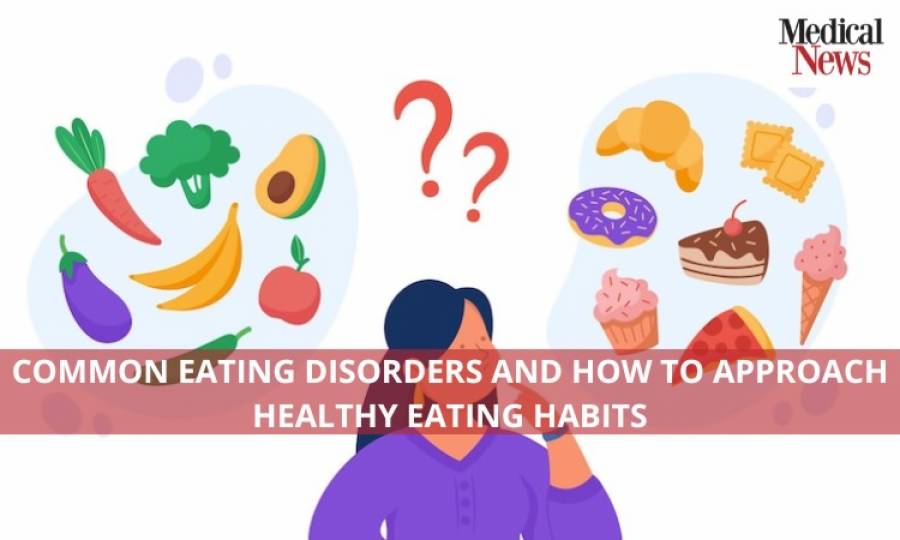Common Eating Disorders and How to Approach Healthy Eating Habits

Eating disorders are a group of mental health illnesses entailing an unhealthy and disordered relationship with food. These disorders make the affected person focus too much on weight, body shape and food, leading to dangerous eating habits. These disorders happen primarily in teens and young adults but can also occur later in life. They can cause severe damage to the nutritional status along with affecting bones, teeth, skin and hair. If left untreated, they can even result in death. Some common eating disorders are:
- 1. Anorexia nervosa: It is a well-known eating disorder affecting women more than men. People with anorexia generally think they are overweight, even if they are excessively underweight. They tend to constantly monitor their weight, avoid eating certain types of foods, and severely restrict their calorie intake. Common symptoms of anorexia nervosa include restricted eating patterns, intense fear of weight gain, a constant wish to become thin, and body image issues. It is categorized into two subtypes --- the restricting type and the binge eating and purging type. The restricting type loses weight through diet and fasting. Whereas the purging type binge eats a lot of food and then takes that food out of the system through vomiting or diuretics.
- 2. Bulimia nervosa: People with bulimia frequently eat enormous amounts of food during a specified time. They feel like they cannot control their binge eating and even eat foods they usually do not eat. However, similarly to anorexia, they resort to purging through the same methods. The difference is that patients with bulimia typically maintain an average weight. Binge eating episodes can cause electrolyte imbalance in the body. Common symptoms of bulimia nervosa include recurrent episodes of binge eating, recurrent episodes of purging behaviors, and self-esteem issues.
Other less common eating disorders are Pica, in which individuals eat items that are not considered food, and binge eating disorder, which has no purging patterns.
Healthy habits
Recognizing the disorder and contacting a doctor is the first step. Counseling, meal planning, setting dietary goals, maintaining an appropriate weight, reading about food and making a conscious effort when eating are some of the habits that can be incorporated to have a healthy lifestyle. Moreover, focus on self-esteem and seek therapy if needed. Eating at the dinner table with family can reinforce healthy habits. Avoiding fad diets and setting realistic goals should be the strategy.
Trending
Popular
Sindh pledges vigorous action to prevent poliovirus transmission
-
PMA stresses health equity on World ...
04:08 PM, 9 Apr, 2024 -
Dow University’s new rabies vaccine ...
12:18 PM, 28 Mar, 2024 -
IRD role lauded in advancing ...
02:53 PM, 12 Mar, 2024 -
Over one billion people worldwide ...
09:48 AM, 5 Mar, 2024




